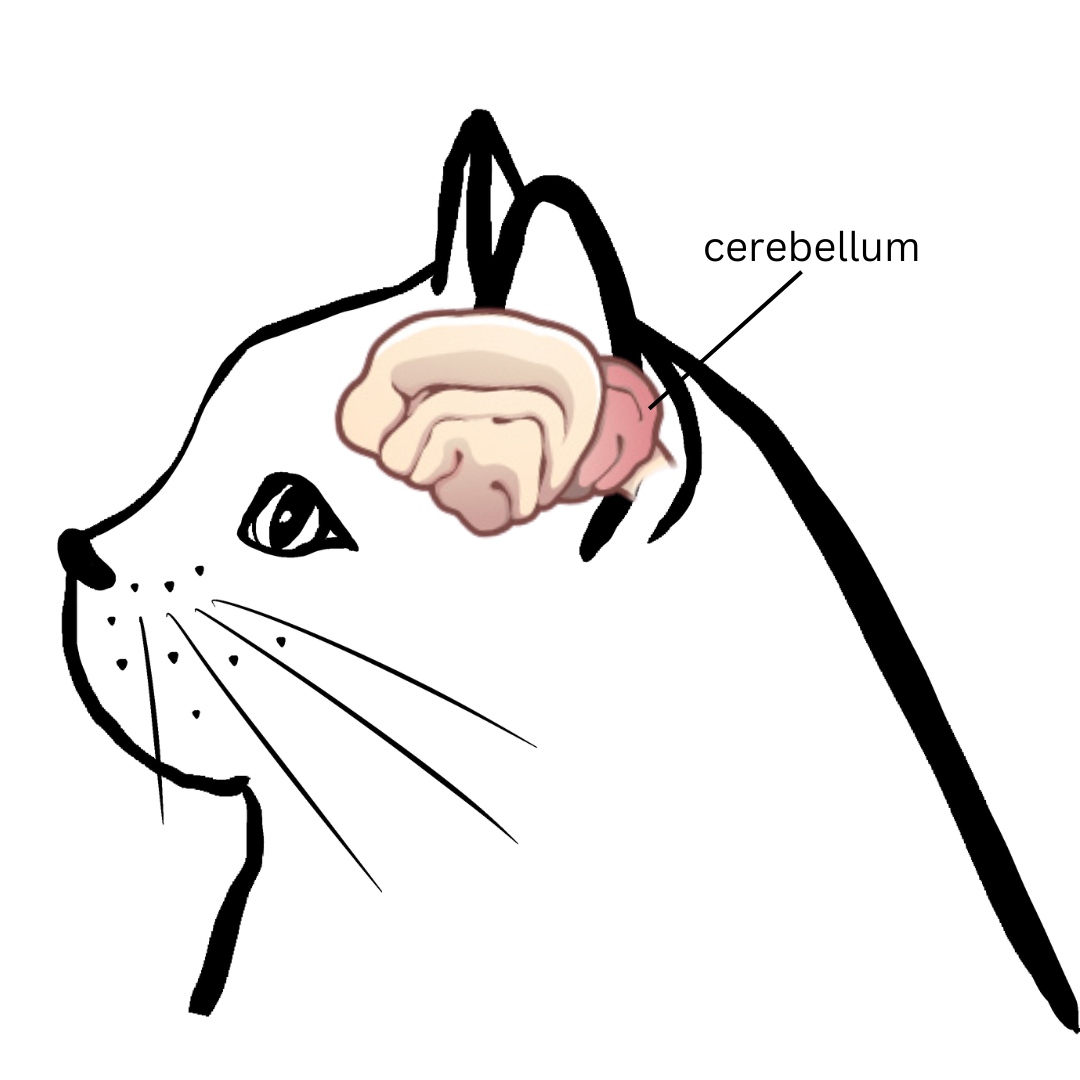Cerebellar Hypoplasia
What is Cerebellar Hypoplasia?
Cerebellar hypoplasia is a neurological condition in which the cerebellum—the part of the brain that coordinates movement—is smaller than usual or not completely developed. This condition can affect cats, dogs, and even humans. In shelters, we tend to see this condition more often in cats than in dogs. Cerebellar hypoplasia is not contagious or painful.
What causes Cerebellar Hypoplasia?
In cats, cerebellar hypoplasia is caused by a mother cat becoming infected with feline panleukopenia virus while pregnant and then passing the infection to her unborn kittens.
Monstera is a kitten at RAL with cerebellar hypoplasia. She is currently in foster care.
The panleukopenia virus prefers to attack rapidly dividing cells. During the perinatal period (i.e., in the last weeks of pregnancy and the first weeks after birth) the cerebellum is undergoing rapid growth and development, making it extremely vulnerable to attack by the virus. The condition may affect only 1 kitten in the litter, or it could affect all the littermates.
The cerebellum is responsible for purposeful movement and coordination, so symptoms of this condition may not be noticeable until the kitten starts to try and stand or walk on their own. Severity of symptoms will depend on how much of the cerebellum was affected and at what stage of development the infection occurred.
What are the symptoms?
Jerky or uncoordinated walking, swaying from side to side when trying to walk, a goose-stepping gait called hypermetria, mild head tremors, and/or intention tremors are the most common symptoms. Intention tremors are tremors that occur when the kitten intends to make some sort of movement. Intention tremors may be present to a minor degree when the kitten walks, but will usually become more pronounced when the kitten tries to do something more involved such as playing with a toy or bending over to drink or eat out of a bowl.
Cats with this condition are often called “wobbly cats” due to their wobbly movements.
Symptoms can be as mild as a slight head tilt. More severe symptoms may require special needs care, like assistance eating or making special accommodations for their safety, like putting out non-slip rugs for ease of walking.
Is there treatment for Cerebellar Hypoplasia?
Because this condition is caused by underdevelopment of the kitten’s brain, there is no treatment for cerebellar hypoplasia. Most kittens with cerebellar hypoplasia an live a normal lifespan and can overcome the limitations caused by their condition and find their own way to navigate the world.
If you want to help RAL save more pets like Monstera, please consider donating.



